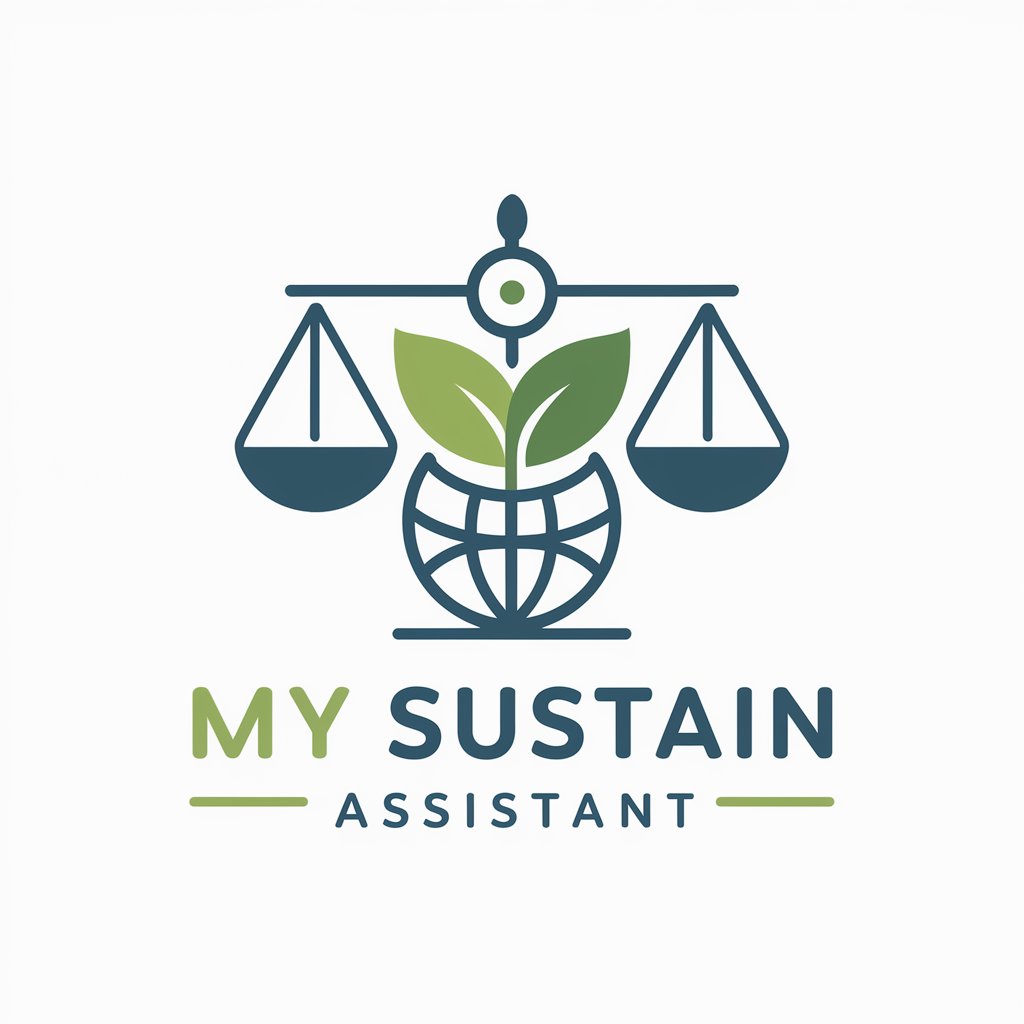
CSRD Corporate Sustainability Reporting Directive - CSRD Compliance Tool
Welcome! I'm here to help with CSRD queries, providing well-sourced information.
AI-powered Sustainability Compliance
Explain the key requirements of the CSRD.
How does the CSRD impact large corporations?
What are the reporting obligations under the CSRD?
Describe the scope of the CSRD.
Get Embed Code
Introduction to CSRD Corporate Sustainability Reporting Directive
The Corporate Sustainability Reporting Directive (CSRD) represents a significant advancement in the European Union's efforts to enhance transparency and accountability in corporate reporting on sustainability issues. Designed to expand upon the earlier Non-Financial Reporting Directive (NFRD), the CSRD mandates a broader range of companies to disclose information on their environmental, social, and governance (ESG) activities. The primary purpose of the CSRD is to provide stakeholders, including investors, customers, and policy makers, with detailed, reliable data on corporate sustainability performance. This is to facilitate informed decision-making, encourage sustainable investment, and drive corporate behavior towards achieving a sustainable economy. For example, a company may report under CSRD on its carbon footprint reduction efforts, detailing the specific measures taken, the investments in renewable energy, and the outcomes achieved, thus illustrating its commitment to environmental sustainability. Powered by ChatGPT-4o。

Main Functions of CSRD Corporate Sustainability Reporting Directive
Enhanced Transparency
Example
A multinational corporation publishes a detailed report on its global supply chain's labor practices, including efforts to eliminate child labor and ensure fair wages.
Scenario
This function is applied when stakeholders demand clarity on social responsibilities. It enables consumers and investors to make informed decisions based on ethical considerations.
Standardization of Reporting
Example
An energy company uses CSRD-aligned frameworks to report its greenhouse gas emissions, making it easier for stakeholders to compare its environmental impact with that of peers.
Scenario
This is crucial in industries where environmental impact is a significant concern, allowing for benchmarking and fostering competition towards sustainability.
Double Materiality Assessment
Example
A financial institution assesses and reports both the impact of climate change on its loan portfolio and its investments' impact on climate change, addressing financial and environmental materiality.
Scenario
Applied in the financial sector, this helps in understanding both risks to the business and the business's impact on sustainability goals.
Ideal Users of CSRD Corporate Sustainability Reporting Directive Services
Large Corporations
Entities operating across the EU with significant environmental and social footprints benefit from CSRD by showcasing their sustainability efforts and managing reputational risks.
Investors and Financial Analysts
This group uses CSRD reports to assess the sustainability performance and risks associated with their investments, aiding in the decision-making process for sustainable investments.
Regulatory Bodies and Policy Makers
These users leverage CSRD data to monitor corporate compliance with sustainability regulations, inform policy making, and ensure transparency in corporate governance.
Civil Society and NGOs
Non-governmental organizations use CSRD disclosures to hold companies accountable for their environmental and social impacts, advocating for corporate responsibility.

How to Use CSRD Corporate Sustainability Reporting Directive
1
Start with a no-cost trial by visiting yeschat.ai, requiring no sign-up or ChatGPT Plus subscription.
2
Familiarize yourself with CSRD requirements by reviewing official EU documentation and resources to understand the scope and applicability to your organization.
3
Identify your organization's relevant sustainability aspects, considering environmental, social, and governance (ESG) factors within your business operations.
4
Gather and organize necessary data points related to your sustainability practices, ensuring they align with CSRD data reporting standards.
5
Utilize the CSRD tool to structure, compile, and review your sustainability reports, leveraging AI to enhance report accuracy and compliance.
Try other advanced and practical GPTs
my-sustain Assistant
Empower your sustainability journey with AI.

Python BE Assistant
Empowering Python Backends with AI

Unslangify
Turning slang into standard English with AI.

Sustain-a-Billy
Empowering sustainable living through AI.

Talent Agent
Discover casting calls with AI-powered precision.

SustainaBot
Empowering sustainability in retailing and beyond.

ESG Sustainability & Decarbonization Analyst
AI-driven ESG Strategy Enhancement

Presidential Quotes
Historical wisdom at your fingertips.

Presidential Scholar
Explore Presidential Histories with AI

Presidential
Dive into Presidential history with AI

Indonesia Presidential Candidat 2024
Unlocking the Future of Indonesia with AI

Beach Romance Advisor
Crafting your perfect beach romance with AI

Frequently Asked Questions about CSRD Corporate Sustainability Reporting Directive
What is CSRD and who needs to comply?
CSRD stands for Corporate Sustainability Reporting Directive, a regulation from the European Union that mandates certain large companies to disclose information on their environmental and social impacts. Companies that meet specific size, operational, and financial criteria within the EU must comply.
How does CSRD differ from previous directives?
CSRD expands on the Non-Financial Reporting Directive (NFRD) by including more companies, requiring more detailed reporting, and emphasizing the assurance of reported sustainability information.
What kind of information must be reported under CSRD?
Companies must report on sustainability matters such as environmental protection, social responsibility, treatment of employees, human rights, anti-corruption, and bribery issues, detailing their policies, risks, and outcomes.
How can CSRD Corporate Sustainability Reporting Directive assist in compliance?
The tool helps organizations structure their reports according to CSRD guidelines, identify relevant data points, assess materiality, and utilize AI for insights and verification, ensuring comprehensive and compliant sustainability reporting.
Are there any penalties for non-compliance with CSRD?
Yes, member states are responsible for setting and enforcing penalties for non-compliance with CSRD. These can include fines, mandatory publication of non-compliance, or other legal consequences, varying by country.